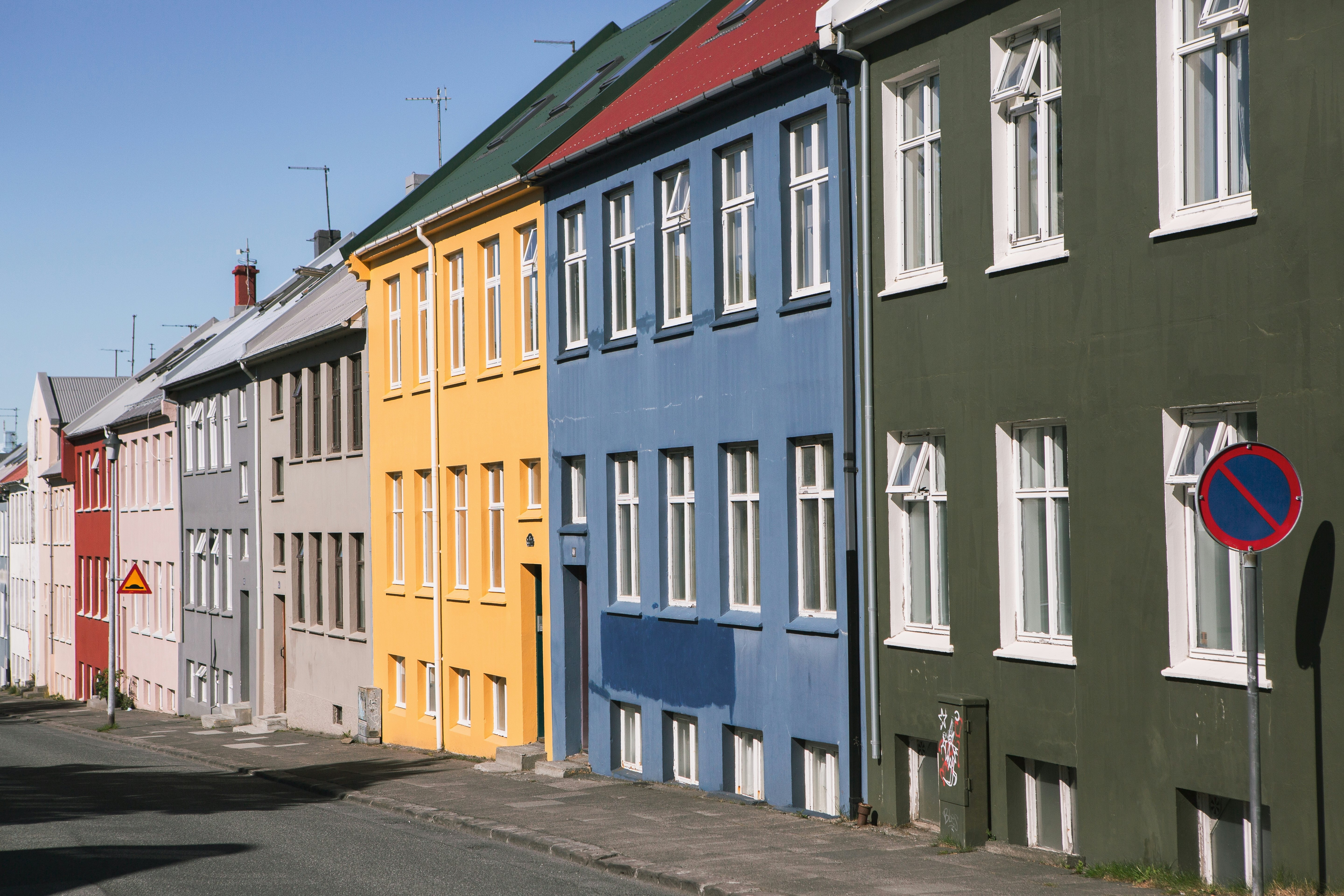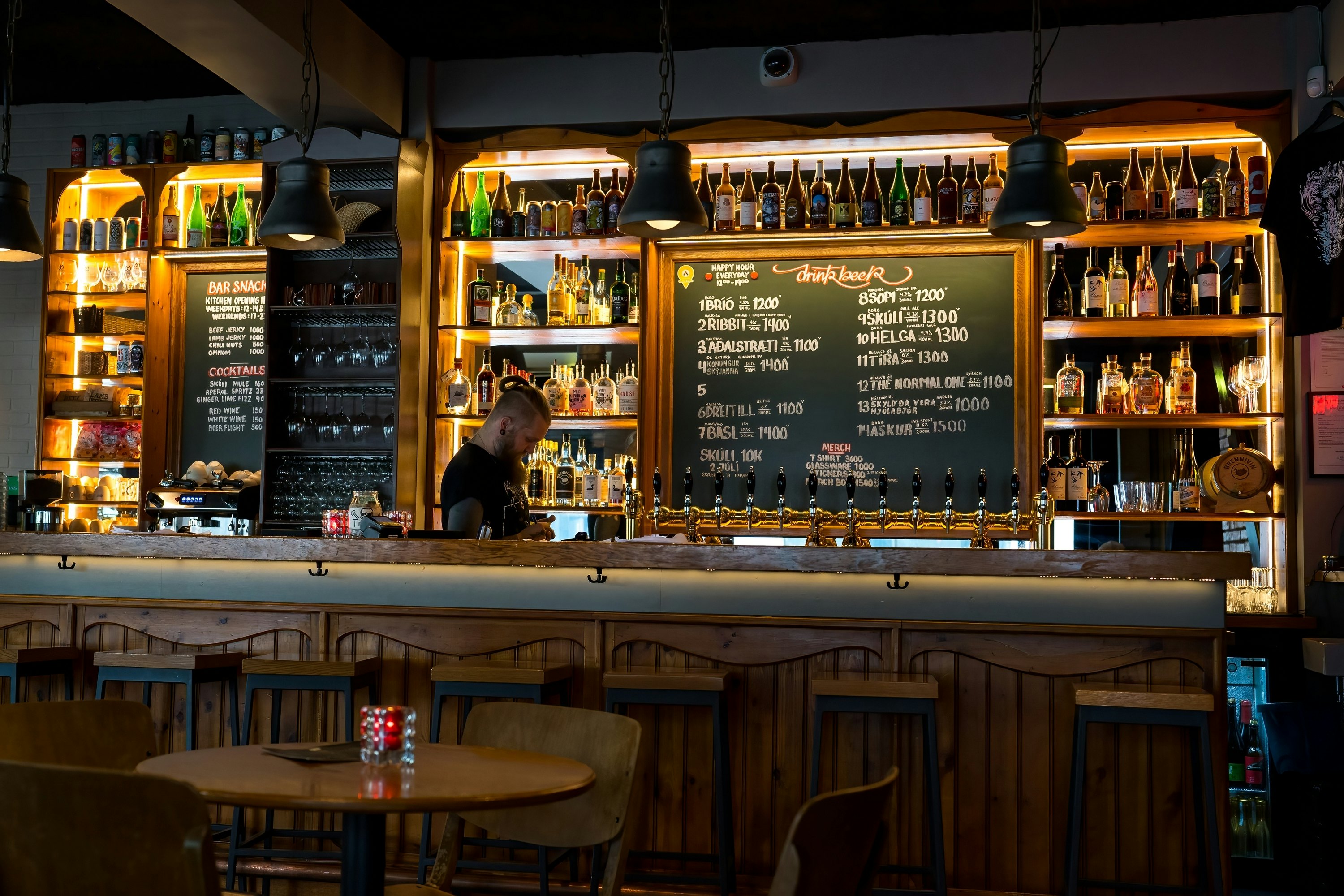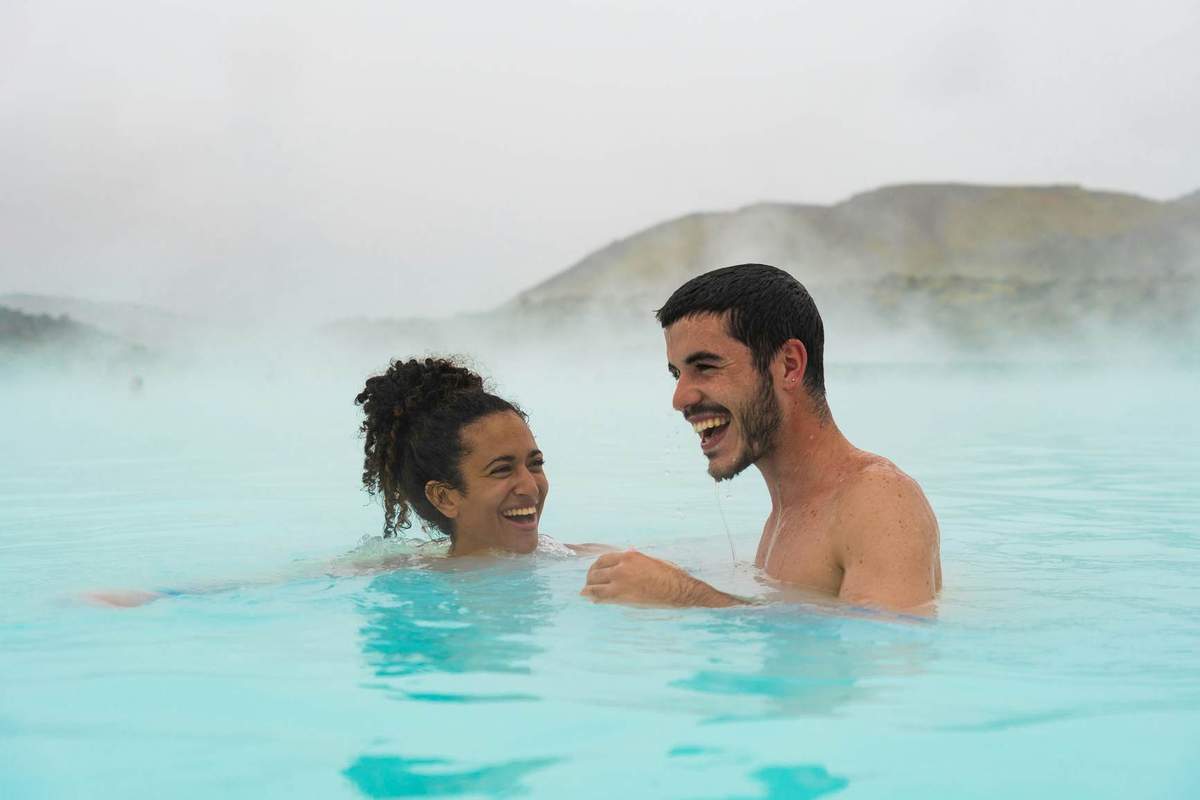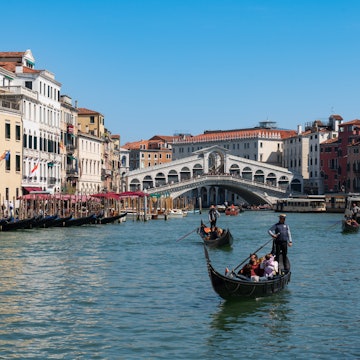

Tjörnin, the lake in the middle of Reykjavík. AsiaTravel/Shutterstock
Reykjavík is full of life year-round. Around 60% of Iceland’s population lives in the capital region, making the most of both long winter nights and long summer days with superb arts and crafts, excellent live music and creative restaurants paired with humble hot dog stands. Plus there are all those toasty hot springs, perfect for soaking and taking the chill off after a long walk past the brightly colored houses tiered along the shore or hopping around the vibrant bars in Reykjavík 101 (the center of the city).
Combine your city break with a road trip and you can craft an itinerary around the volcanoes, waterfalls and glaciers that radiate out across this splendid, welcoming island.

When should I go to Reykjavík?
The streets of Reykjavík fill up from June to August, as visitors flock to Iceland for its warm(ish) summer season, seemingly endless daylight and access to the countryside. Some of the most extreme mountain roads (called F roads) are only open from mid- to late June and close by the end of August, when ice and snow start to accumulate again. The downside? Prices are at their highest, and you need to book at least six months in advance for good accommodations, the best deals on cars and the most coveted tours.
Spring and autumn have fewer crowds; those big open spaces feel more your own, and you share the streets with more with locals. The weather is variable – but really, it can be all year – so pack accordingly, but prices are softer and availability more open. Also, you can still access much of the country.
Winter is the province of darkness and austere adventure. Full daylight hours are miniscule – just three or four hours per day – but the atmospheric sunrises and sunsets make for great viewing, and it’s the chance to see the northern lights. Many country hotels and restaurants close or reduce services (especially over the December holidays), but Reykjavík itself remains open for all comers. Prices are at their most affordable.

How much time should I spend in Reykjavík?
Well, I’d say forever, but if you have to limit your trip, you can soak up a lot of the Reykjavík vibe and its top sights in two or three days. You’d get to have leisurely coffees and kleinur (bow-shaped doughnuts) or ástarpungar ("love ball" doughnut spheres with raisins), shop design boutiques and visit art museums, galleries and the Sun Voyager statue.
Then I’d surely suggest a minimum of another two days to get out into the countryside, go on a whale-watching trip or pick any of the other astounding activities – ice climbing, glacier walking, snowmobiling, hiking, puffin viewing in the back of a farm tractor or simply strolling behind the shimmering sheet of a coursing waterfall.
During winter, chase the northern lights (get help with the aurora forecast) and enter the ice caves that firm up at glacier edges (they are unstable the rest of the year). With a very short drive from Reykjavík, you can reach significant places like the original parliament site in the rift valley of Þingvellir National Park, or cross to the other side of the Ring Road and see the active fissure volcanoes around the Reykjanes Peninsula (when they’re safe to observe) and lagoons, hot springs and pools.
Is it easy to get to and around Reykjavík?
Reykjavík is the primary international gateway to Iceland, so its Keflavík International Airport, about 49km (30 miles) southwest of Reykjavík, always seems to be expanding. There are also a few flights from Greenland and the Faroe Islands that arrive at Reykjavík Domestic Airport. Icelandic public transportation is generally efficient and accessible. Unless you are jumping in a rental car to tour outside of Reykjavík immediately, then Flybus and Airport Direct run regularly to the city center (and are cheaper than taxis), or take public bus 55.
The center is enjoyably walkable, with tidy straight streets and lots to look at in a compact area surrounding Tjörnin, the lake in the middle of town. The bus network (Strætó, with its handy app Klappið) works very well for the further reaches of the city. A car is really unnecessary if you are staying in the capital unless you have mobility issues.
For getting around the Icelandic countryside, you can either rent a car or join one of the many, many tours and excursions that include pickup in Reykjavík. Public bus routes beyond the capital are targeted to Icelandic villages and towns, and services in some areas are reduced or cut altogether in winter.




Top things to do in Reykjavík
Wander in the compact center
Part of the real fun of Reykjavík is walking around and exploring. Since it’s so compact, grabbing a coffee (Icelanders love their coffee) and baked goodie (try Sandholt or Brauð & Co) and window-shopping on pedestrianized Laugavegur and Skólavörðustígur easily lead to a visit to Hallgrímskirkja or the several branches of the Reykjavík Art Museum and the Reykjavík Museum of Photography.
Explore Icelandic history
You can also stroll through the Old Reykjavik district for a history hit, checking out the earliest buildings, including a Viking longhouse at the Settlement Exhibition. Then continue south along the lakeside of Tjörnin to the National Museum.
Fill up with can't-miss food and music
I also love a walk around the Old Harbor, with Harpa concert hall glittering in the distance – definitely stopping for a meal at one of the many great seafood spots, from high-end Matur og Drykkur to casual comfort food at the Grandi Mathöll (food hall) or craft beer at Lady Brewery. The area around Grandi is generally loaded with entertainments, including kid-friendly places like the Saga Museum, Whales of Iceland and the Omnom Chocolate factory.
And don’t miss hearing live music while you’re in town. Locals know how to put on a good show. You can warm up at Kaffibarinn or in excellent brewpubs like Kaldi, Micro Bar and Skúli.

My favorite thing to do in Reykjavík
No matter the time of year, I love, love, love soaking in Icelandic waters. Every town in Iceland has a pool or geothermal hot spring (or several), and in Reykjavík, I love the vintage pool, multiple hot pots, cold plunge, sauna and steam room at central Sundhöllin (it was designed in the 1930s by the same architect who did Hallgrímskirkja).
You can also head out to the windswept Seltjarnarnes neighborhood for a walk around the lighthouse, then a soak at its pool. East of the center, the awesome Laugardalur pool complex abutting the botanic garden has twisting water slides, more art and a sculpture museum, and is near the jumping-off point to remote Viðey Island.
Before you jump in, observe the required pool etiquette. It is an absolute all over Iceland that if you are going to swim or soak, you must shower using soap (without your swimsuit on) and wash your hair in the provided locker room. It’s basic Icelandic hygiene and allows the pools to have minimal or no chlorine or chemicals added.

How much money do I need for Reykjavík?
Iceland ain’t cheap, and Reykjavík is among the most expensive places in the country, especially for lodging. You can help yourself out by booking well ahead to get the best deals or visiting outside of high season. Bars and restaurants are pricey as well – with a bowl of soup and homemade bread costing what a full meal might in southern Europe. To save a few krona, combine some eating out with a fair dose of self-catering. Another budgeting trick? Buy alcohol in the airport’s duty-free shop as you arrive for big savings.
But the fact is, the cost is well worth it. Iceland is such a special country that no matter how many days you can afford, a visit will pay you back in lifetime memories. Plus, quality is generally high. Your splurge of a trip should get you clean, well-run accommodations and delicious homemade food.
Night in a boutique hotel: 36,000–51,500kr (US$285–408)
Night in a guesthouse with a shared bathroom: 22,000–29,000kr (US$175–230)
Night in hostel dorm bed: 5000–7000kr (US$40–55)
Night camping: 1500–2500kr (US$12–20)
Beer: 1050-1700kr (US$8–14)
Bowl of soup with bread: 1700–2500kr (US$8–20)
Hot dog: 300-600kr (US$2–5)
Meal in a cafe: 2500–5500kr (US$20–44)
Main dish in a high-end restaurant: 4500–7000kr (US$35–55)

What should I pack for a visit to Reykjavík?
What you can predict about weather in Reykjavík is that it is unpredictable. A sunny 16°C (60°F) day can easily turn to storms and clouds. Always pack layers and always bring them with you when you hike. Ideally, you’ll have a thick, warm wool (or synthetic that dries well) underlayer and a waterproof outer layer.
Do I need to know Icelandic?
Most Icelanders speak impeccable English, making travel for anyone who can make do in English rather easy. Some of the older generations do not, however, and in general, learning a few expressions, like takk fyrir (thank you), is simply polite and more fun.
How can I be a responsible traveler in and around Reykjavík?
Iceland’s online resources (Visit Iceland and Visit Reykjavík) are superb, and a network of sites and apps can help you plan for safe travel if you leave the capital. Sjalfsbjorg.is provides short-term mobility equipment rental and curated lists of accessible hotels, restaurants and transportation options.
Reykjavík Grapevine is a great English-language newspaper and website with cultural listings. Entertaining and informative podcasts to get you in the mood include All Things Iceland and Stories of Iceland.
Despite the summer festival vibe in the capital, always be respectful of its residents’ needs. Though it can get busy, it’s still their home, and overtourism and jacked up apartment prices are a real concern. When a few Icelanders ate whale, shark or puffin, it could be sustainable, but when 1 million tourists do, not so much.
If you leave the capital, stay on marked roads and protect the truly unspoilt nature (you don’t want to be the one to spoil it). Only use designated areas for camping and actual toilets for your pit stops. Check weather and road conditions before leaving for the day. If you're going hiking, register at Safe Travel and learn about staying safe.
















